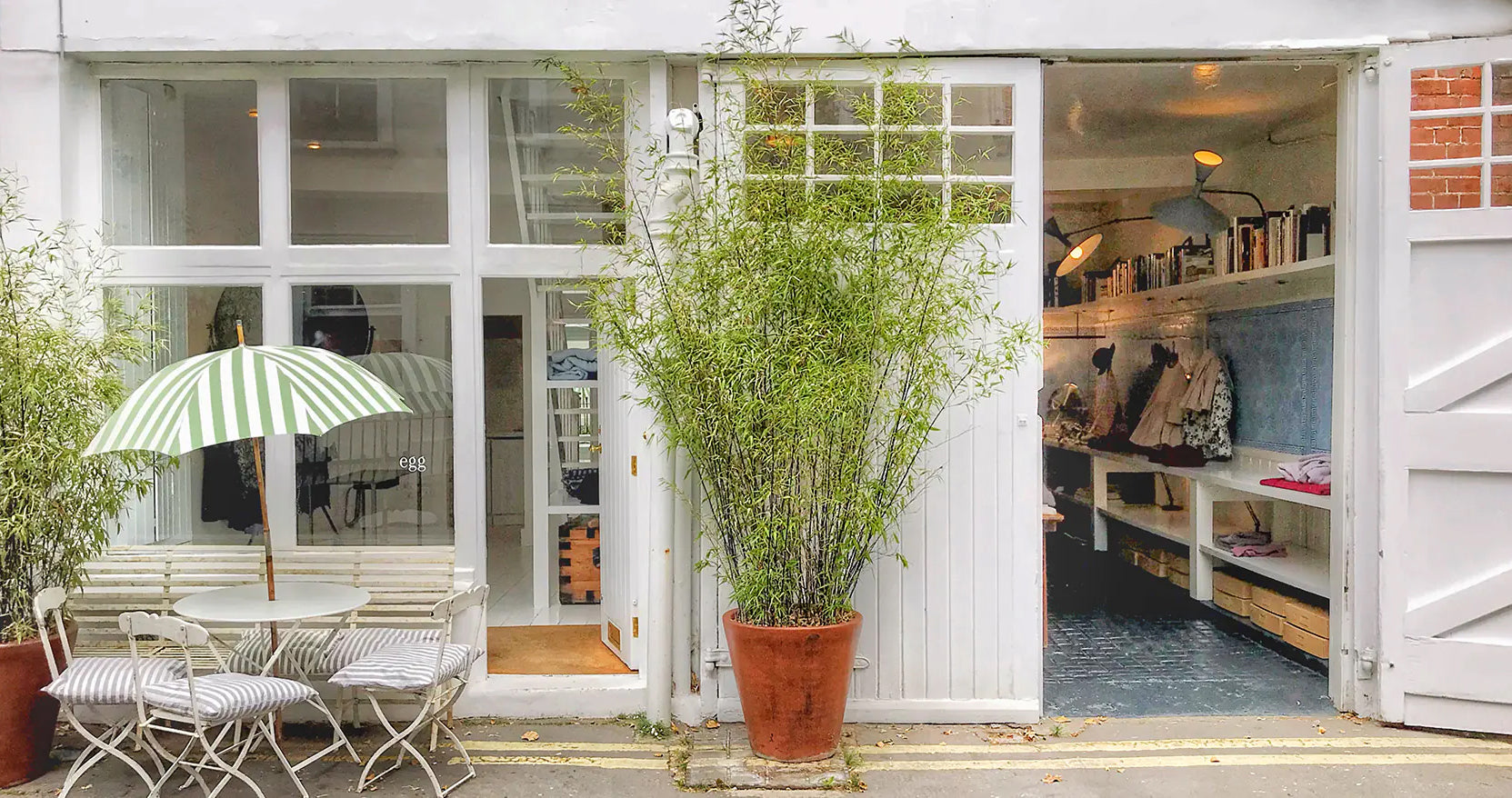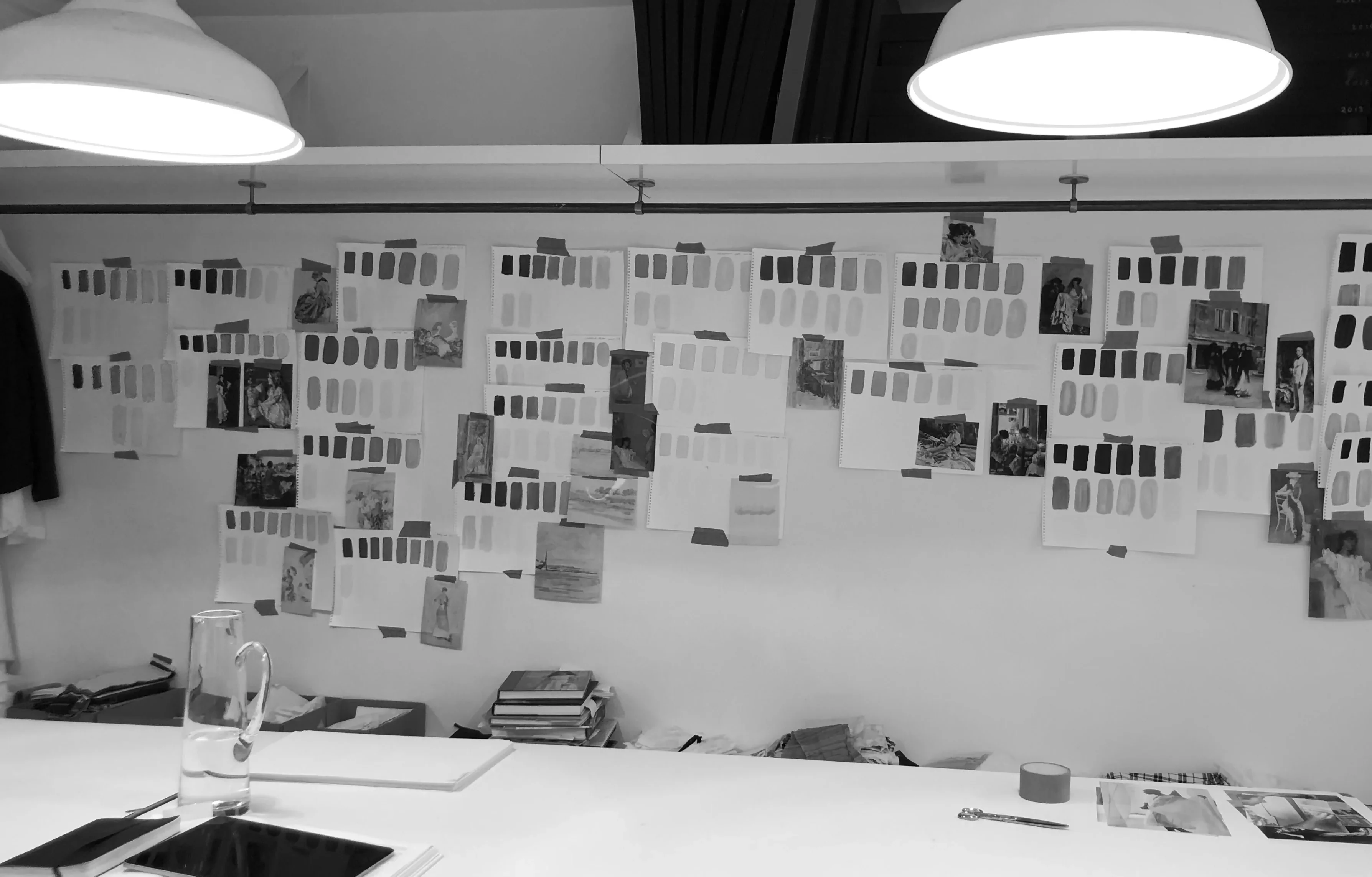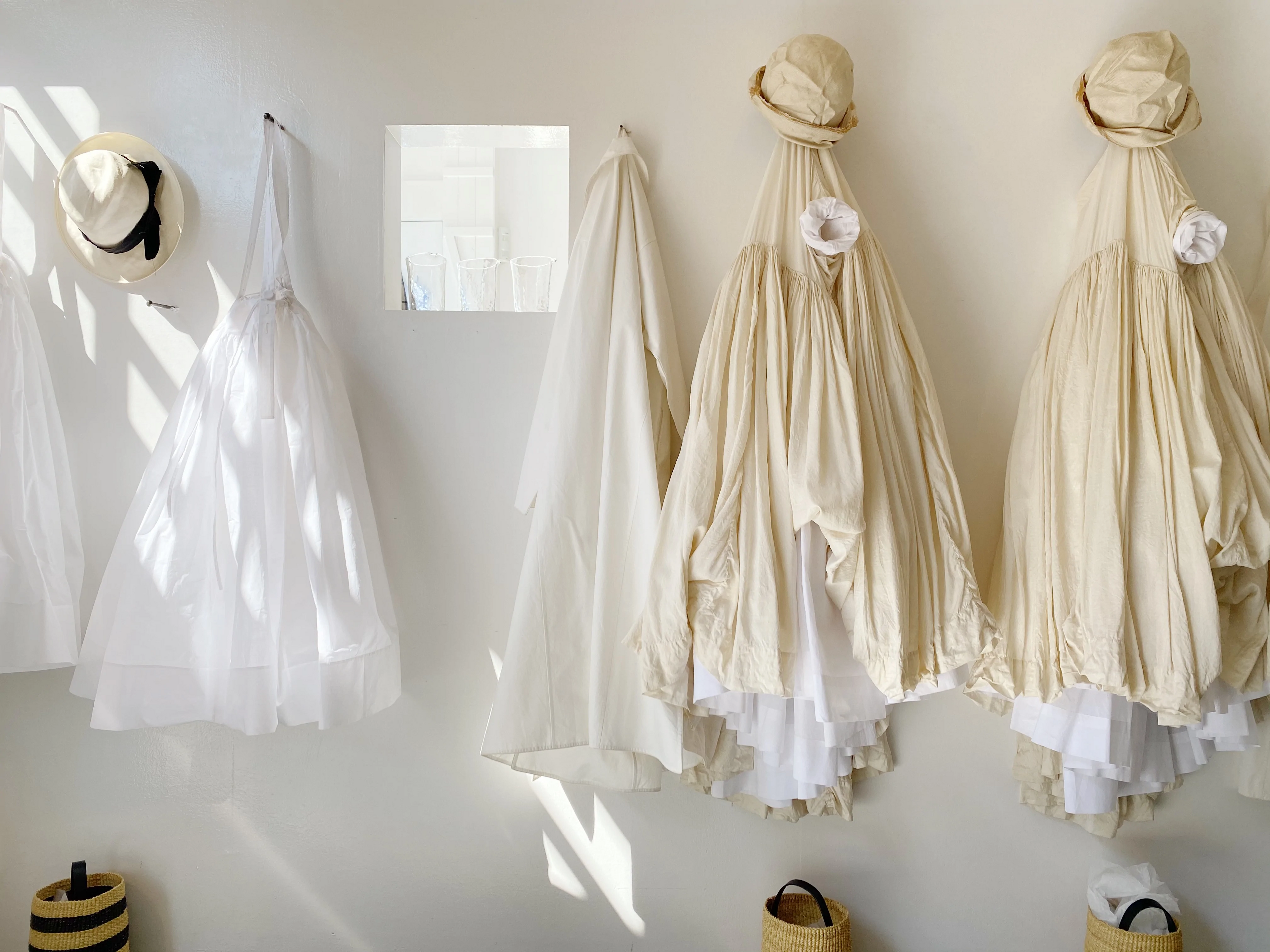about
egg opened its doors in 1994, a converted dairy on a quiet Belgravia street. Maureen Doherty wanted to create her vision of what a shop should be, to sell the beautiful and everyday.
egg makes and sells timeless pieces, clothes and objects. Walking down Kinnerton street, you can find the egg family walking, steaming and sewing. Pots, books, scarves, boots, pencils and jars of flowers sit amongst the collections displayed or piled throughout the rooms, on hooks, rails and stacks. Coffee is freshly brewed and lunch is cooked in the kitchen upstairs. egg is also a meeting place for young makers and designers to experiment and find their way. This has always been integral to the life of egg. Youth and experience, laughing and learning.
It was the first place that potter and author Edmund de Waal had a solo exhibit, where Keiko Hasegawa made one thousand pots in a year to set in rows on the floor and where silversmith, Bill Phipps, hand forged very small and very large silver spoons.
collections
The clothes made by egg are simple, playful and beautiful. In two collections a year, it is a process of research and design. Inspiration may come from a photograph, a book, or workwear, such as the white uniform of a Rajasthani milkman or a French gardener's jacket.
The collections evolve through the seasons. In winter, the cloth is thicker and warmth is added with layers and silks and cashmere. In spring and summer, cotton, linen and fine silks arrive.
Clothes are tied, buttoned and wrapped, allowing the wearer to find their own way. These are clothes that get better with time. They are loved and often passed down through generations. They are for men and women, young and old, large or small. They become your own.



